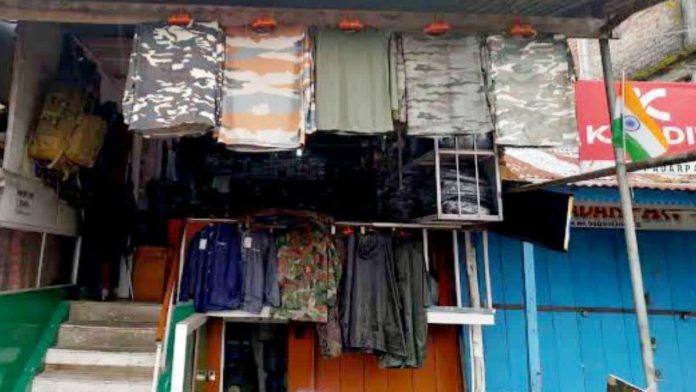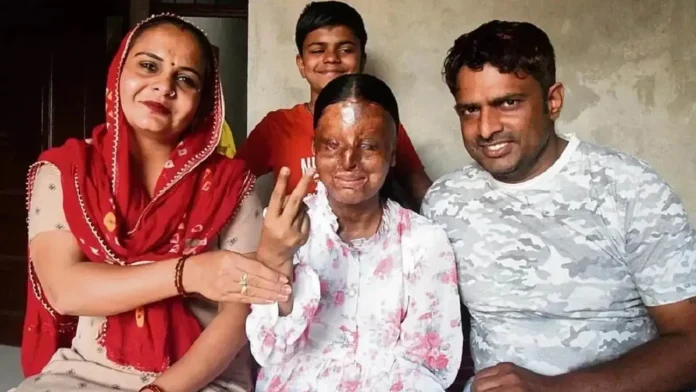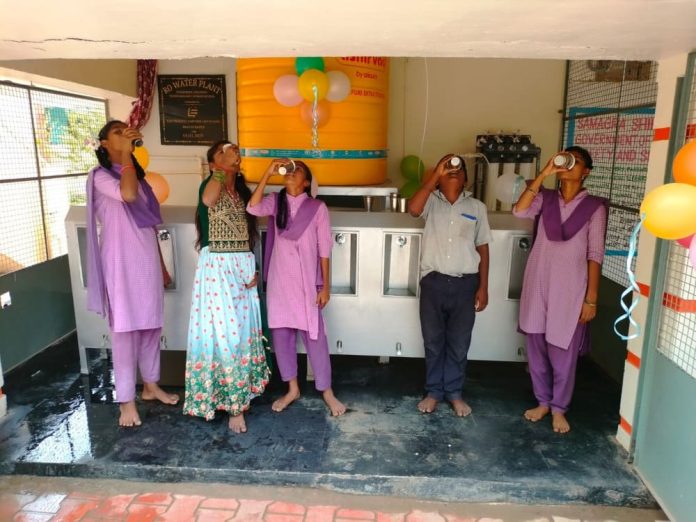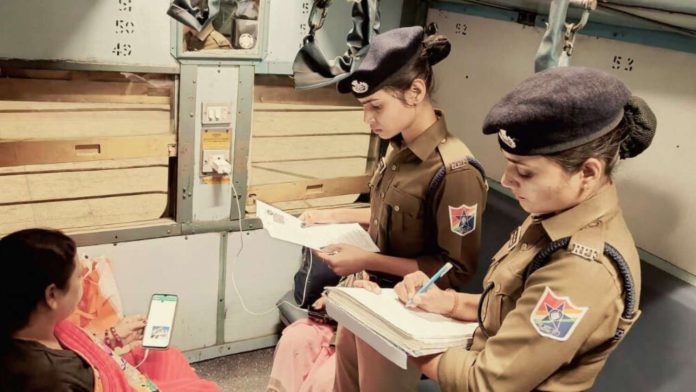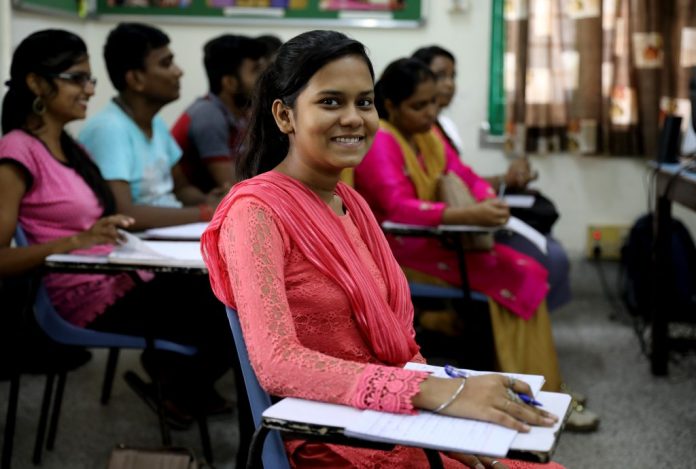Security reinforced in Siliguri Corridor: Ban imposed on Army-style uniforms to thwart potential threats
In a proactive move to reinforce national security in the highly sensitive Siliguri Corridor—popularly known as the Chicken’s Neck—the police and administrative authorities have imposed a blanket ban on the sale, manufacture and rental of army-style uniforms across Darjeeling district, including Siliguri.
The decision comes amid rising concerns that such clothing may be misused by miscreants to conduct attacks under the guise of armed forces personnel.
The directive follows intelligence inputs and local allegations indicating that readymade garments resembling military attire are being sold in various markets across Siliguri. Moreover, tailor shops in several localities—namely Pradhannagar, Bhaktinagar, Shalugara and Champasari—are reportedly engaged in stitching clothes using fabric mimicking military camouflage.
In response, the authorities enacted the ban on Tuesday night, aiming to shut down any avenue that may facilitate identity-based infiltration or sabotage operations.
Following the enforcement of the ban, officials from the Darjeeling district administration and Siliguri police commissionerate convened meetings with cloth merchants, tailors and other business stakeholders to inform them about the new regulations. Simultaneously, surveillance and monitoring have been intensified by both the police and the Indian Army to ensure strict adherence.
“We have already held discussions with traders. Clothes resembling army uniforms must not be produced or sold. Tailors have been notified of the prohibition,” said Darjeeling superintendent of police Praveen Prakash.
Tailor shops, social media under scanner
The police have been instructed to compile a detailed list of tailors and businesses involved in making or selling army-style garments. As part of the crackdown, tailoring registers and inventory logs will be regularly inspected to identify any illegal activity. Cloth traders are also under similar scrutiny.
Siliguri’s deputy commissioner of police Bishwachand Thakur said, “Only army personnel are authorised to wear military uniforms. A thorough audit of tailoring shops and traders is underway. Registers will be checked frequently to ensure compliance.”
In addition to the crackdown on illegal uniforms, police forces have ramped up surveillance of social media platforms across North Bengal. Authorities are on high alert for content that is anti-national, misleading or provocative. Any such digital activity is being closely monitored and swiftly addressed to prevent unrest or misinformation campaigns.
Historical precedents drive stringent action
The move is underscored by historical instances where terrorists have exploited army uniforms to execute attacks. Notably, Pakistani militants involved in the recent Pahalgam massacre and the Pathankot airbase attack in 2016 were disguised in military attire, allowing them to bypass initial security layers undetected. These chilling precedents have compelled law enforcement to eliminate all possibilities of similar tactics being repeated.
The Chicken Neck, or Siliguri Corridor, is a narrow land bridge approximately 21 kilometers wide at its thinnest point. This strip is of immense strategic value as it connects India’s northeastern states to the mainland and shares international borders with Nepal, Bhutan and Bangladesh. Any security lapse in this region could pose a serious threat to national integrity and connectivity.
Following heightened tensions with Pakistan, both the centre and state governments have prioritised bolstering security in the region. The recent measures are part of a broader initiative to safeguard this geopolitically crucial zone.
With law enforcement on high alert and rigorous monitoring underway, the administration has made it clear that no compromise will be tolerated when it comes to internal security. The joint efforts of the police, army and civilian stakeholders aim to keep the Chicken Neck region secure, preventing any malicious forces from exploiting disguises or weaknesses in the system.
Union Cabinet Approves Semiconductor Chip Unit in Uttar Pradesh
The Union Cabinet has approved a joint venture between HCL and Foxconn to set up a chip assembly and packaging unit in the state of Uttar Pradesh. The plant will manufacture display driver chips for mobile phones, automobiles, PCs, laptops, and other electronic electronics, including a display. The capacity of the facility will be designed for production of 20,000 wafers per month and an output capacity of 36 million units each month.
This will be the sixth project to receive approval under the government’s ambitious ₹76,000 crore India Semiconductor Mission. The plant is said to attract an investment of ₹3,706 crore, with ₹1,500 crore coming from the Government’s kitty as part of incentives under the cheap manufacturing scheme.
Plant in Uttar Pradesh
The new chip assembly and packaging plant is set up near Jawar airport at the Yamuna Expressway Industrial Development Authority in Uttar Pradesh. This is the first ship plant in the state that has come up under the Centre’s semiconductor mission. Other plants, including a fab and three assembly units, are also being developed in the state of Gujarat. Another assembly and packaging plant is underway in Assam.
The Union IT Minister Ashwini Vaishnav said that the plant will start producing chips by 2027 and will be able to meet around 40% of India’s local demand for semiconductor chips. The rest of the produce will be used by Foxconn for its foreign manufacturing facilities. This is the company’s second attempt at making a foray into India’s local ship production.
India Successfully Tests Homegrown Bhargavastra Drone Killer
India has achieved an important step in defence technology by successfully test-firing its locally made Bhargavastra counter-drone system. This system, developed by Solar Defence and Aerospace Limited (SDAL) and Economic Explosives Ltd (EEL), is meant to tackle the rising threat of hostile drone swarms. Such swarms have become a serious security concern for today’s armed forces.
The trials took place at the Seaward Firing Range in Gopalpur, Odisha, on 13 May 2025. Senior officials from the Army Air Defence (AAD) witnessed the event. The Bhargavastra system was tested three times: two tests involved firing single rockets, and one test involved firing two rockets together in quick succession. All four rockets performed as expected, showing that Bhargavastra is reliable and uses advanced technology to stop large-scale drone attacks.
Multi-Layered Defence Enhances Security
Bhargavastra uses a layered defence method. The first layer fires unguided micro rockets, which can destroy drone swarms within a 20-metre radius up to 2.5 km away. The second layer uses guided micro-missiles for accurate targeting, making sure even small and fast drones can be taken down. This layered approach helps the system deal with both groups of drones and single threats.
A key feature of Bhargavastra is that it can be used in different parts of India, including high-altitude areas above 5,000 metres. The system is mobile, so it can be moved quickly to where it is needed. Its radar can spot small aerial targets from 6 to 10 km away. It also has advanced sensors to help identify and track drones that are hard to detect.
Bhargavastra’s design allows for adding a “soft-kill” layer, which can use electronic jamming and spoofing to disrupt drones without destroying them. The system can also connect smoothly with India’s existing defence networks, thanks to its modern Command-and-Control Centre with C4I (Command, Control, Communications, Computers, and Intelligence) features. This ensures quick and informed responses to new aerial threats.
Bhargavastra can launch more than 64 micro missiles at once. This makes it a cost-effective and flexible answer to the ongoing problem of drone swarms, which are often cheap and hard to stop with older air defence systems. The development and successful testing of Bhargavastra is a big achievement under the “Make in India” programme. It boosts India’s self-reliance in key defence technology and gives the country a strong shield against new threats in modern warfare.
Hisar Acid Attack Survivor Kafi Tops Chandigarh Blind School with 95.6% in CBSE
Meet 17-year-old Kafi who topped her school by scoring an impressive 95.6%. In a significant display of courage, resilience and determination she topped in her blind school. But, what’s unique about Kafi is that she is a visually impaired student.
According ti reports, Kafi is from the Institute for the Blind in Sector 26, Chandigarh. She topped her school in the CBSE Class 12 humanities stream. Her success comes after facing unimaginable trauma at the age of three. Kafi’s academic journey stands as a testament to the power of hard work.
A Shocking Attack that Changed Her Life
Three-year-old Kafi’s life took a tragic turn during the Holi festival in 2011. Three neighbours in her native village attacked her with acid. Her village is Budhana, located in Haryana’s Hisar district.
The horrifying act, reportedly fueled by jealousy. The attack caused severe injuries to her face and arms and permanently took away her eyesight. Though she received initial treatment at AIIMS Delhi, doctors were unable to restore her vision. “The doctors saved my life, but not my eyesight,” Kafi said.
Learning with Audiobooks and Grit
Following the incident, Kafi started her education at the age of eight. She soon joined the Blind School in Chandigarh from Class 6. She relied on audiobooks to pursue her studies after losing her eyesight to the incident. This shows her dedication to academic brilliance early on.
According to reports, in Class 10, she secured 95.2% and topped her school. However, her dedication continued through Class 12. Despite facing multiple hurdles, Kafi achieved perfect scores in History, Political Science, Geography, and Painting, and a near-perfect score in English.
Aspirations Beyond Academics
Kafi’s goal is to serve the country and bring about meaningful change. She aspires to pursue a Political Science Honours degree from Delhi University. Kafi aims to become an Indian Administrative Service (IAS) officer. Her dreams stretch beyond academic success. She has already appeared for the DU entrance exam and hopes to begin her academic journey soon.
Injustice Lingers, But Hope Prevails
Where, on the one side Kafi continues to inspire with her achievements. On the other side the perpetrators of the heinous acid attack remain unpunished. “The people who did this to me are still free,” she said, underlining the need for justice even as she moves forward with courage and determination.
Celebrating Success at the Blind School
Meanwhile, Kafi’s success was matched by the achievements of her classmates. In her school Sumant secured the second position with 94%, and Gursharan Singh followed closely with 93.6%.
Grand Mother-Son Pass SSC Exam Together: मुंबई की 65 वर्षीय प्रभावती ने पोते के साथ दी 10वीं की परीक्षा, दोनों हुए पास
Senior Citizen Education India: पढ़ाई की कोई उम्र नहीं होती और इसे साबित कर दिखाया है मुंबई की रहने वाली 65 वर्षीय प्रभावती जाधव ने। जिन्होंने अपने पोते के साथ 10वीं की परीक्षा दी और शानदार प्रदर्शन करते हुए 52% अंक हासिल किए। वहीं उनके पोते सोहम जाधव ने भी उन्हें निराश नहीं किया और 82% अंक लेकर SSC परीक्षा पास की। Prabhavati Jadhav SSC Result 65 साल की उम्र में 10वीं पास करना कोई आसान बात नहीं, लेकिन प्रभावती जाधव ने यह कर दिखाया। उनके साथ उनके पोते सोहम ने भी जो उपलब्धि हासिल की है, वह परिवार की दो पीढ़ियों की साझा जीत है। यह खबर उन सभी के लिए प्रेरणादायक है जो किसी वजह से अपनी पढ़ाई बीच में छोड़ चुके हैं या दोबारा शुरू करने में हिचकिचा रहे हैं।
Grand Mother-Son Pass SSC Exam Together: दोनों की मेहनत लाई रंग Inspirational SSC Stories
प्रभावती ने बताया कि उन्होंने मराठी माध्यम से परीक्षा दी थी जबकि उनका पोता अंग्रेजी माध्यम में पढ़ रहा है। दोनों ही पढ़ाई को लेकर बेहद गंभीर थे और परीक्षा की तैयारी एक साथ किया करते थे। जब प्रभावती परीक्षा देने जाती थीं तो उन्हें देखने वाले लोग आश्चर्यचकित हो जाते थे लेकिन साथ ही उन्हें देखकर प्रेरणा भी लेते थे। The CSR Journal से ख़ास बातचीत करते हुए प्रभावती जाधव ने बताया कि पास होकर मुझे खुशी हुई। मुझे खुशी हुई कि मेरा पोता भी पास हुआ और मैं भी पास हुई। मेरा पोता अंग्रेजी मीडियम से पास हुआ है, मैं मराठी मीडियम में थी। जब मैं परीक्षा देने जाती थी तो लोग खुश होते थे।
दादी मराठी मीडियम में तो पोता अंग्रेजी मीडियम में, दोनों ने साथ पढ़ाई की और साथ पास भी हुए
जैसे ही यह खबर सामने आई, सोशल मीडिया पर लोगों ने प्रभावती जाधव को ‘प्रेरणा की मिसाल’ बताया। कई यूज़र्स ने लिखा कि आज की युवा पीढ़ी को प्रभावती जैसी महिलाओं से सीख लेनी चाहिए, जो इस उम्र में भी पढ़ाई के लिए इतना समर्पण दिखा रही हैं।
पढ़ाई के लिए मिला परिवार का समर्थन
प्रभावती ने यह भी बताया कि उन्हें अपने परिवार और खासकर पोते सोहम का पूरा साथ मिला। दोनों ने मिलकर पढ़ाई की और एक-दूसरे को समझाया। सोहम जहां अंग्रेजी विषयों में दादी की मदद करता था, वहीं दादी मराठी और इतिहास जैसे विषयों में पोते को टिप्स देती थीं। प्रभावती की यह सफलता सिर्फ उनके लिए नहीं बल्कि समाज के हर उस व्यक्ति के लिए प्रेरणा है जो यह मान बैठा है कि अब पढ़ाई का वक्त गुजर चुका है। उन्होंने यह सिद्ध कर दिया कि अगर मन में सच्ची लगन हो, तो उम्र कोई मायने नहीं रखती। इस तरह की कहानियां समाज को यह सोचने पर मजबूर करती हैं कि शिक्षा हर उम्र में जरूरी है, और इसे पाने की चाहत ही व्यक्ति को आगे बढ़ाती है।
CSR News: Advanced RO water plant installed at government school in Srikalahasthi
Srikalahasthi, Andhra Pradesh: As a part of their ongoing commitment to community development and sustainable social impact, Electrosteel Castings Limited (ECL) a global leader in Ductile Iron Pipes and Fittings has installed a state-of-the-art R.O. water purification plant at Zilla Parishad High School, Thondamanadu, Srikalahasthi, located near its manufacturing facility.
For years, the Zilla Parishad High School in Thondamanadu has struggled with a lack of access to clean and safe drinking water, which had affected the health and learning environment of nearly 500 students from Grades 6 to 10. Electrosteel Castings Limited – Srikalahasthi Works promptly deployed its resources and technical expertise to install a high-efficiency R.O. water purification system, ensuring a sustainable supply of clean drinking water to the school.
The initiative has been met with warm appreciation and gratitude from the school administration, faculty, and students, who hailed the project as a timely and impactful intervention.
Speaking on the occasion, Suresh Khandelwal, ED, ECL Srikalahasthi Works said “Access to clean and safe drinking water is central to public health, especially for young students. Our commitment to empowering the people of Srikalahasthi through such infrastructure support is unwavering, and this RO plant is a small yet meaningful way of building a stronger, healthier learning environment for the students of Thondamanadu. We extend our heartfelt wishes to the school community and look forward to continuing our efforts to support their growth and well-being.”
The program is an extension of Electrosteel’s broader CSR strategy, which focuses on key areas like women empowerment, digital and financial literacy. By investing in sustainable infrastructure and responding to real community needs, Electrosteel Castings Limited continues to champion responsible corporate citizenship and long-term community upliftment.
Disclaimer: This media release is auto-generated. The CSR Journal is not responsible for the content.
Types of Savings Plans and Their Benefits: A Complete Guide
Whether it’s buying a home, sending your child abroad for education, or enjoying financial freedom post-retirement, your aspirations deserve more than just wishful thinking—they need planning. And not just any plan, but one that combines discipline, growth, and protection.
That’s where a savings plan steps in.
It’s not about stashing away money—it’s about building wealth, enjoying financial security, and preparing for life’s surprises and celebrations. But which plan is right for you? Let’s decode the types of savings plans in India and the benefits they bring to your financial journey.
1. Endowment Plans
Endowment policies combine insurance and savings. You get life cover along with a lump sum on policy maturity, provided all premiums are paid. If something unfortunate happens, your family still receives the sum assured.
Benefits:
-
Guaranteed payout either as maturity or death benefit
-
Helps in disciplined savings
-
Suitable for people with low-risk appetite
2. Unit Linked Insurance Plans (ULIP’s)
ULIPs are a mix of investment and insurance. A portion of your premium goes towards life cover, while the rest is invested in equity, debt, or balanced funds based on your risk appetite.
Benefits:
-
Market-linked returns
-
Flexibility to switch between funds
-
Ideal for long-term goals like child’s education or wealth creation
Consider this: The Aviva Signature Investment Plan – Platinum is a ULIP that helps you grow wealth while securing your loved ones. It offers fund-switching flexibility, multiple investment options, systematic withdrawals, and a RetireSafe feature to reduce risk closer to maturity. Plus, it comes with life cover and tax benefits—giving you both growth and protection in one plan.
Invest up to ₹2.5 Lakh annually in ULIPs to optimise tax efficiency. Over time, tax-free returns on maturity enhance financial efficiency while ensuring long-term protection for your family.
3. Child Savings Plans
Every parent dreams of giving their child the best opportunities in life. Child savings plans are designed to financially secure important milestones in a child’s life—schooling, higher education, and even marriage.
Benefits:
-
Lump sum at key stages of a child’s life
-
Waiver of premium in case of the parent’s demise
-
Ensures continuity of benefits, no matter what happens
4. Pension Plans
A pension plan ensures your post-retirement years are spent with peace, not financial anxiety. These plans help accumulate a corpus during your working years, which later gives you a regular income.
Benefits:
-
Retirement income through annuity payouts
-
Option to choose immediate or deferred annuity
-
Ideal for securing life after 60
Consider this: The Aviva Signature Increasing Income Plan is designed for lifelong financial comfort. It provides a guaranteed monthly income that increases by 15% every 3 years to combat inflation. In case of an untimely demise, Aviva continues to fund future premiums while your family keeps receiving income benefits—ensuring uninterrupted financial support.
5. Guaranteed Savings Plans
These are non-linked, non-participating life insurance policies that offer guaranteed returns along with life cover. You receive assured benefits either at regular intervals or at the end of the policy term.
Benefits:
-
Guaranteed returns with no market risk
-
Life cover included
-
Flexible premium payment and payout options
Consider this: The Aviva Signature 3D Term Plan – Platinum goes a step further than traditional term insurance. It provides comprehensive protection against death, disease, and disability, and includes a Preventive Wellness Package. With special premium rates for women and non-tobacco users, it’s ideal for those seeking financial security along with health-conscious features.
6. Public Provident Fund (PPF)
A government-backed long-term savings option, PPF is ideal for conservative investors. It comes with a 15-year lock-in but offers attractive tax-free returns.
Benefits:
-
Tax-free interest
-
Safe and stable returns
-
Suitable for long-term goals like retirement or education
7. Sukanya Samriddhi Yojana (SSY)
Aimed at the girl child, this government scheme offers high interest and tax benefits to encourage early savings for a daughter’s future.
Benefits:
-
Attractive interest rate
-
Tax benefits under Section 80C
-
Withdrawal allowed for education or marriage after the child turns 18
8. Senior Citizens Savings Scheme (SCSS)
Exclusively for individuals above 60, SCSS is a safe investment option with quarterly interest payouts and tax benefits.
Benefits:
-
Regular income after retirement
-
Government-backed security
-
Tax deduction under Section 80C
How Tax Benefits Make a Difference?
Savings plans can significantly reduce your tax burden while helping you build wealth. Most life insurance-based plans offer deductions under Section 80C, and the maturity proceeds are tax-free under Section 10(10D). Add-on riders like critical illness also qualify for deductions under Section 80D.
For instance, Nitin, a 40-year-old IT professional earning ₹30 lakh annually. He invested ₹1.5 Lakh in the Aviva Signature Investment Plan – Platinum (a ULIP), reducing his taxable income and saving ₹45,000 in taxes under Section 80C. By adding a critical illness rider to his Aviva Signature 3D Term Plan – Platinum, he claimed an extra ₹25,000 deduction under Section 80D.
Later, he used tax-free partial withdrawals to support his children’s education, and his retirement payout remained exempt under Section 10(10D)—proving that smart planning offers both protection and tax savings.
*As per Section 10(10D), maturity and death benefits from ULIPs remain tax-free only if the total annual premium does not exceed ₹2.5 Lakh, as per the Finance Act 2023 amendments.
Why Should You Invest in a Savings Plan?
-
Dual benefits of life cover and financial growth
-
Regular income or lump sum returns to meet goals
-
Low risk options available for conservative investors
-
Customisable features like premium term, payout options, and riders
-
Peace of mind knowing your family is financially protected
Tips to Choose the Right Plan for You
-
Define your life goals – education, home, retirement, legacy
-
Consider your risk appetite – go for ULIPs or mutual funds for higher returns, or endowment and guaranteed plans for stability
-
Choose a tenure that matches your goal timelines
-
Evaluate if you need liquidity or flexibility
-
Don’t forget to check riders for added protection



